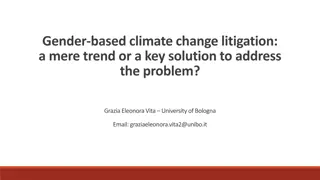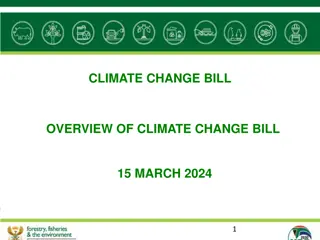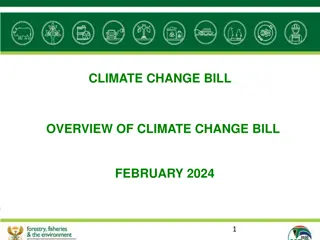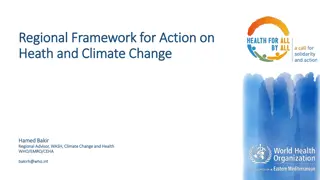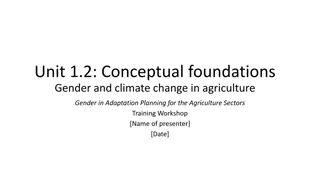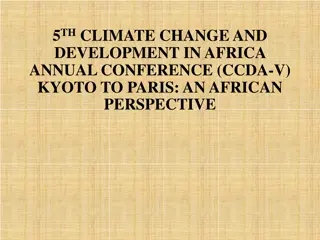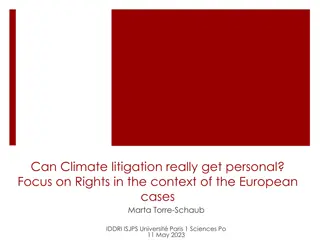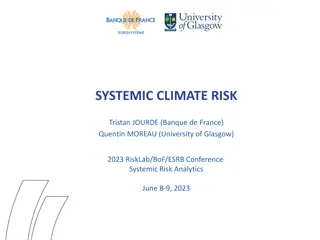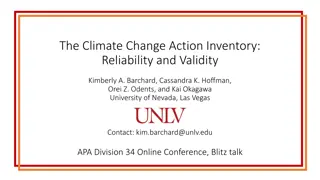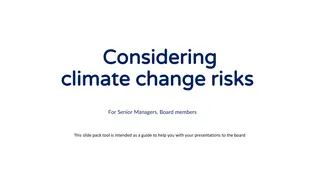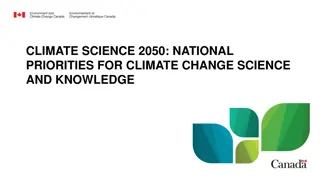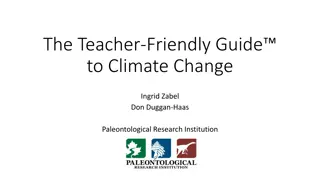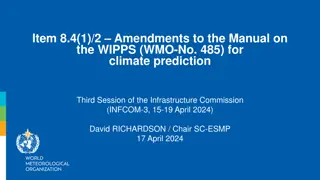
Understanding Climate Change: Impact, Science, and Action
Explore the Compassionate Citizenship Program lecture on climate change provided by Ms. Nikita Naidu. Delve into the framework, current impacts, adaptation strategies, and mitigation efforts. Understand the science behind climate change, human influences, and the greenhouse effect. Learn about extreme weather impacts and the call to action for a sustainable future.
Download Presentation

Please find below an Image/Link to download the presentation.
The content on the website is provided AS IS for your information and personal use only. It may not be sold, licensed, or shared on other websites without obtaining consent from the author. Download presentation by click this link. If you encounter any issues during the download, it is possible that the publisher has removed the file from their server.
E N D
Presentation Transcript
COMPASSIONATE CITIZENSHIP PROGRAM LECTURE ON Climate Change Framework Provided By Ms. Nikita Naidu Pilot Project By In Collaboration With SCERT (Telangana State)
Climate Change Exploring the Impact of Climate Change and Strategies for the Future 1. Understanding Weather and Climate 2. The Science Behind Climate Change 3. Current Impacts of Climate Change 4. Adaptation Strategies 5. Mitigation Efforts 6. Conclusion and Call to Action
Climate Change Understanding Weather and Climate Distinguishing Between Weather and Climate for Climate Change Insights Short-term vs Long-term Weather represents daily atmospheric conditions, while climate refers to averages over decades. Importance of Differentiation Understanding the difference is crucial for effective climate change discussions and policies. Human Influence Human activities, particularly greenhouse gas emissions, significantly alter both weather patterns and climate. Impact on Ecosystems Shifts in climate affect biodiversity, altering habitats and species survival rates.
Climate Change The Science Behind Climate Change Understanding Human Impact on Atmospheric Changes 1. Burning Fossil Fuels Combustion of coal, oil, and gas releases CO2, significantly raising greenhouse gas levels. 2. Deforestation Tree removal decreases CO2 absorption, worsening atmospheric imbalance and contributing to warming. 3. Industrial Activities Manufacturing processes emit greenhouse gases, adding to the atmospheric changes driving climate change. 4. Greenhouse Effect Increased greenhouse gas concentrations trap heat, resulting in global temperature rise and climate disruptions.
Climate Change The Greenhouse Effect Understanding the Natural Phenomenon of Heat Retention in Our Atmosphere Key Greenhouse Gases Major contributors like CO2, CH4, and N2O are essential in trapping heat. Human Impact Increased CO2 from fossil fuels significantly amplifies the greenhouse effect. Temperature Rise Global temperatures are rising, leading to severe climate consequences. Weather Patterns Altered weather patterns disrupt ecosystems and human activities.
Climate Change Extreme Weather Impacts of Climate Change Flash Floods ? disrupt public and private infrastructure, causing significant damage and displacing residents. ? Eg. Pakistan floods Heat Waves ? Record temperatures crossing 50 degree celcius have threatened public health and reduced agricultural yields. ? Eg. Telangana and AP 2015 Sea Level Rise ? Coastal regions and small Island Nations face increasing threats from rising sea levels, risking homes and ecosystems. ? Eg. Carteret Islands Droughts ? The frequency of droughts has surged, leading to severe water scarcity and impacting livelihoods. ? Eg. Maharashtra and Kerala Wildfires ? Escalating wildfires, resulting in devastating damage to ecosystems and communities. ? Eg. Australia and Brazil ? ? ? ? ?
Climate Change ADAPTATION STRATEGIES Key Approaches to Mitigate Climate Change Vulnerability Enhancing Adaptive Capacity Focus on improving community resilience and readiness for climate challenges through training and infrastructure improvements. Reducing Vulnerability Implement protective measures such as early warning systems and safe zones for populations at high risk from climate impacts. Strengthening Resilience Build robust systems capable of withstanding climate impacts, ensuring sustainability in agriculture, water supply, and health services.
Climate Change Mitigation Efforts Strategies to Combat Climate Change Through Emission Reduction Transition to Renewable Energy Utilizing sources like solar, wind, and biomass to decrease emissions. Enhance Energy Efficiency Improving technology and practices to use less energy for the same output. Promote Sustainable Land Use Implementing practices that maintain ecological balance and conserve resources.
Climate Change Conclusion Navigating Climate Change: Challenges and Opportunities Ahead ? Understanding Climate Science Grasping the fundamentals of climate science is crucial for informed action. This knowledge helps in recognizing trends and impacts. ? Acknowledging Impacts Recognizing the diverse impacts of climate change on ecosystems and communities is essential for effective response strategies. ? Innovative Solutions Embracing innovation can lead to sustainable technologies and practices that mitigate climate effects and enhance resilience. ? Collaborative Action Collaborative efforts among governments, businesses, and communities can amplify the impact of climate initiatives and ensure broader reach. ? Strategic Implementation Implementing effective strategies is vital for achieving long-term sustainability goals and addressing climate change comprehensively. ? ? ? ? ?






